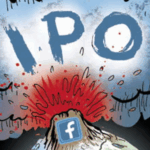 “Data-Driven Thinking” is written by members of the media community and contains fresh ideas on the digital revolution in media.
“Data-Driven Thinking” is written by members of the media community and contains fresh ideas on the digital revolution in media.
Today’s column is written by Lior Eldan, co-founder and chief operating officer at Moburst.
Everyone in marketing, especially mobile marketing, knows attention is scarce. With attention spans getting shorter, the challenge of boosting retention and engagement rates grows increasingly difficult. Every push notification competes with screens, reminders and information coming from all directions.
The $1 million question: When are people most receptive to marketing content? The answer is when they aren’t focusing on anything in particular. In other words, when they’re bored.
The first step to understanding the connection between mobile phone usage and boredom is by listening to what users themselves have to say in the matter. Some 42% of mobile users in a Pew Research study do so to fight boredom. The numbers were even higher, reaching 70%, when examining those between 18 and 29 years old.
Following up on that data, a user behavior study from Telefonica Research collected more than 40 million user logs to create a machine-learning model representing boredom. The research identified bored users based on their mobile phone usage, finding that users who were bored tended to check Instagram and email more than others.
Users also checked social media repeatedly, despite knowing not much had changed since they last time they visited. Another interesting thing users did was fiddle with their mobile device settings.
The researchers popped up push notifications to users who, based on their mobile usage data, appeared to be bored, informing them about interesting content that specifically aims to kill time. They discovered that those users were significantly more receptive. Although there is still a long way to go in research in this field, this is still an extremely valuable piece of information for app marketers looking to boost retention and engagement among users.
When it comes to apps in the fields of dating, gaming, news and other types of content, the time between when a push notification is received to when the user taps it and revisits the app is critical. If too much time goes by, users will be less likely to visit the app and more likely to ignore the notification. Therefore, it is detrimental to the effectiveness of push notification that the user is more receptive when the notification is sent out.
How can we determine when users are bored? Data.
The first thing that comes to mind is during waiting times, such as before a doctor’s appointment, at the bus or train station or during public transportation commutes. Many marketers send out push notifications before work hours, based on the assumption that users are on their morning commute. But why not use location technologies to geofence bus stations and train stations? The first thing users do when they get to one is pull out their phones.
Marketers can also identify these times based on app usage and advertise on public transportation apps, based on the clever assumption that users are waiting for their train at the moment.
A company that does this amazingly well is KLM. The Dutch airline created a mobile app that lets users fly a paper jet over a virtual version of the city of Amsterdam. The game acts as an entertaining pastime for users during one of the most hated and boring waiting times: before boarding a flight.
The coolest feature about the game is that, using geolocation technologies, it can tell when users are at the flight gate – they are immediately granted cool rewards and extra points to advance quickly in the game and make it more exciting. The promise of prizes and awards inspires users to keep coming back to the app.
The KLM brand recognized an amazing opportunity to avoid obnoxiously bombarding consumers with marketing messages and instead give back to users in a thoughtful manner, taking into account consumers’ wants and needs. When you disseminate branded messages while the user is having fun and isn’t completely frustrated about lengthy waiting times, the message is absorbed more effectively.
In today’s hectic reality, it is becoming increasingly difficult for brands to grab consumer attention and retain it. In order to make the cut, marketers must change their perspective and shift focus from what it is that they wish to say to what users will actually listen to. Creating the most interesting message is great, but only if this message is delivered during users’ least interesting moment. A brilliantly creative message combined with clever timing will win users’ attention and loyalty.
Follow Lior Eldan (@lioreldan), Moburst (@MoburstUS) and AdExchanger (@adexchanger) on Twitter.












